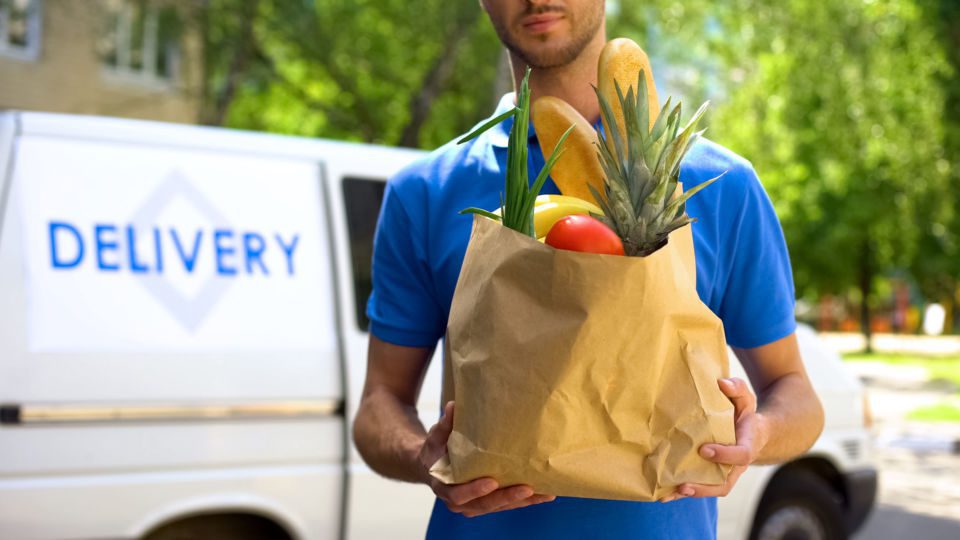
At this time last year, declaration of the COVID-19 pandemic sent shockwaves through the grocery industry, which ran flat out to keep up with the unexpected surge in demand. While some industry watchers predicted that the boon to online grocery would subside later in 2020, that never happened. Online grocery shopping sales grew 54% for the year and are predicted to top $100 billion in 2021. Shoppers across demographics now routinely order their groceries online just as they already did their books, electronics, and apparel.
What has emerged as a genuine concern, however, are the incontrovertible shortcomings in customer experience. Online grocery’s previously lethargic rate of adoption meant that grocers lagged other retail sectors in multichannel merchandising systems, customer data management and fulfillment technology. In many cases, even the product images and descriptions online today are simply borrowed from neighborhood circulars and in-store collateral.
Many in the online grocery industry still operate fulfillment at a very rudimentary technical level. Inventory management systems aren’t aligned with the fluidity of digital demand, resulting in product shortages, embarrassing substitution fails and needlessly high fulfillment costs. As a result, profitability for these online grocers is a challenge. Without the right scale, technology and expertise, online grocery can easily be a money-losing venture.
In 2021, grocers know they need to bring order to the chaos and black ink to the bottom line. This requires a genuine rethink, and will have a number of highly visible impacts on the shape of online grocery. By this time next year, I predict that the sector will have gone through a significant transformation, ultimately moving from laggard to leader within the e-tail ecosystem. Specifically, expect to see the following come to pass:
1. Grocers will re-imagine their businesses — and the people who run them.
Grocery still has its roots planted firmly in brick-and-mortar. Since the 1960s advent of the suburban grocery store, the operating and profit model has focused rigorously on the “holy trinity” of location, assortment and price. However, this approach conflicts with the culture needed to run a successful digital business. For an online grocery operation to thrive, leadership must urgently reimagine the entire operating model according to the narratives, metrics and capabilities of the ecommerce world.
How do you promote items when there is no “power aisle,” for instance? How do you convey freshness online? What are the different “missions” that shoppers execute across channels? What are the new rules of customer engagement? How do you calculate true customer value and profitability in an omnichannel context? Some of these are problems that general merchandise licked years ago, while others are unique to grocery and must be resolved anew.
In 2021, grocers will double down on all of the human, mechanical and digital assets that are needed for the online realm. This will initially create deep internal culture conflicts and cause some players to falter. Teams will be reconfigured as grocers lean into investing and staffing around a “technology first” mindset. Small grocery tech companies will be gobbled up as strategic assets. We will probably even see significant executive management shake-ups, as online metrics become the core responsibility of top merchandise, service and financial officers — not just ecommerce managers.
2. Big business model changes will reflect the CX that shoppers really want.
Another significant shift set to occur in 2021 is the emergence of new business models and customer value propositions. Take subscription services like Hello Fresh and Blue Apron, for instance. In the past, grocery took a dim view of such ideas as either too niche to warrant attention or too likely to cannibalize existing offerings.
That will change once grocers know exactly what items each customer is ordering every week. They will use that data to upsell and cross-sell rather than compete with themselves. Grocers will introduce new, highly targeted subscription services based on what customers order. Imagine a beer-lovers club, for example, or exclusive subscriptions for pet owners or new parents. Real-time data on customer needs is a competitive lever that existing subscription services companies would kill for.
Grocers will begin to recognize their customers across channels and know each shopper’s dietary preferences, product brand loyalties and shopping habits. Highly personalized AI-driven recommendations, coupons and other incentives will become the norm. Loyalty programs will be revamped based on the metrics that drive revenue and improve orchestration. Shoppers will be encouraged to put in bulk orders for staple pantry goods that grocers know they need, for instance. “Buy 2 get 1 free” offers on periodic, discretionary purchases will lift basket size. Incentives for pickup or delivery during off-peak hours will smooth out fulfillment wrinkles. Sales bonanzas in the spirit of “prime day” and delivery saver clubs will maximize single customer potential. (“Why pop into a competitor’s store on your way home to pick up random items when you can have them already waiting on your doorstep at no extra charge?”)
New customer acquisition, activation and retention models will radically change as well. For as long as most can remember, grocers have been faithful to weekly circulars and printed coupons, distributed shotgun-style to adjacent neighborhoods. In 2021, budgets will shift to highly targeted digital communications, modeled around a single view of each customer and based on much more efficient engagement methods.
3. Inventory management and fulfillment will evolve with technology and store redesigns.
Some very significant evolutions I expect to see in online grocery in 2021 come in support of much-needed improvement in fulfillment. Instacart and Shipt-reliant grocers concerned about fulfillment costs, brand control and customer data ownership will develop in-house fulfillment capabilities. This will require flexible, purpose-built technology platforms that support cost-efficient picking of multiple orders simultaneously and precision orchestration of pickups and deliveries. While that is already table stakes for online sales of general merchandise, the much higher item count and the complexities of fresh, chilled and frozen categories in grocery mandate supermarket-friendly solutions.
We will also see some pretty significant store redesigns across the nation. There will be smaller front-of-store footprints, more “buy online, pick up in-store” (BOPIS) lockers, and re-allocation of parking lots to collection areas. Dark fulfillment stores will go from an esoteric phenomenon in niche markets to a commonplace expectation in every major city. We may even see the wide proliferation of micro-fulfillment centers that use pick-and-pack robots to provide ultra-fast urban delivery.
More shelf inventory in shoppable stores will be managed by computer vision camera systems and robotic shelf scanners. Current field tests in last-mile robot and drone delivery will be expanded as Amazon Prime Air and the Walmart-Flytrex collaboration aim to turn drone delivery into a serious competitive advantage.
4. Grocery will be on course to be a trendsetter in online shopping.
Grocery has been the “red-headed stepchild” of the ecommerce industry for far too long. By the end of 2021, the sector will catch up considerably, and even begin to show signs of leadership. BOPIS is a perfect example: as Americans become accustomed to curbside grocery pickup, they will increasingly view BOPIS as a convenience to expect for the long term rather than an oddity to endure for the moment — especially in mission-oriented categories like DIY and pharmacy.
What will really drive grocery’s leadership role, however, is the richness of its customer data. Grocery shoppers transact frequently, revealing inferences about family size, shopper gender, age, income, health and a deep trough of other useful data points that other e-tailers have no access to. Why do you think Amazon bought Whole Foods Market? You can’t get any closer to your customer than the local grocery store. Grocery data paints an incredibly accurate picture of customer profiles that can be used for the kind of personalization that ultimately wins the ecommerce race.
As grocers embrace their new business models and their new role as data stewards, it will radically improve customer experience, inventory management, last-mile fulfillment — and profitability. In turn, grocers will also re-invest in new retail technology innovation. Ultimately, perhaps, we shall even see a grocery-first era within the digital commerce ecosystem.
Barry Clogan is Chief Product Officer at Mi9 Retail/ThryveAI. He is a retail veteran with 20+ years of experience working internationally in retail, grocery, and extensively in ecommerce. As CPO, Clogan oversees the product strategy of all Mi9 Retail solutions as well as the newly launched ThryveAI digital commerce platform. In his previous role as President at MyWebGrocer, Clogan helped the world’s largest grocers launch online grocery services and execute their multichannel strategies. Before joining MyWebGrocer, he spent five years at Tesco, where he led the rollout of the world’s largest online grocery business across eight international markets.




